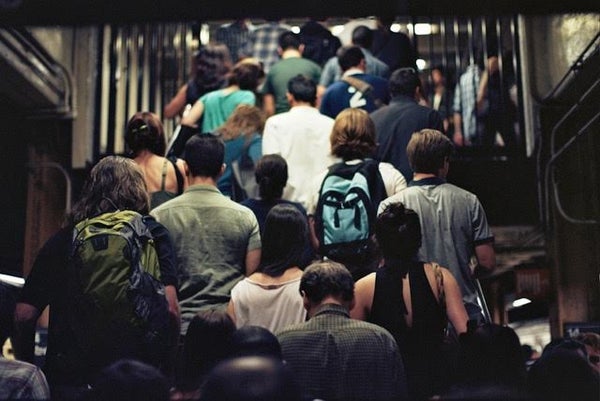This article was published in Scientific American’s former blog network and reflects the views of the author, not necessarily those of Scientific American
Travel itself is fundamentally a derived demand. In other words, one does not seek transport itself; one seeks the destination. To check if this is true, consider this: would you prefer to teleport to your next holiday destination, or do you still prefer flying? I thought so.
Yet, research shows that one’s preferred commuting duration might not be zero, which gives credence to the saying about it being about the journey and not the destination. Of course, there are journeys and then there are journeys, and certainly the pleasantness (or lack thereof) of a commute matters. Given the current state of public transportation and congestion, it is fair to say that commuters are not happy.
Comparing the pros and cons of commuting, researchers Frey and Stutzer examined the “Commuter Paradox”, which arises from the result that while commuters should seek to compensate a longer commute so as to achieve balance, commuters instead report negative overall wellbeing. These findings are significant. The implication is that commuters are not achieving their goals nor optimizing their utility. Instead, the study shows that those commuting 23 minutes (one way; the average commuting time in Germany) would have to earn 19% more per month to feel fully compensated.
On supporting science journalism
If you're enjoying this article, consider supporting our award-winning journalism by subscribing. By purchasing a subscription you are helping to ensure the future of impactful stories about the discoveries and ideas shaping our world today.

New York City’s Metro Transit Authority is state-owned and is charged with taking commuters into account, from Long Island to upstate New York. Image credit: Clay Williams.
While living too close to work is deemed unwanted, we generally do not seem to enjoy commuting. Rather, what we seem to need is a bit of getting around. Is it a primordial nomadic impulse? Perhaps. Or is it a basic health requirement to get up and move around? Could be. Either way, we need to get around; the only question is how?
It is also a bit of a political paradox: while commuters do keep cities going, they usually have scarce representation in the place to which they are going to work. And in many cases, cities experience quite large increases in their “day-time populations” from influxes of commuters.
Washington, D.C. is unsurprisingly the city in the U.S. that fluctuates the most during the day, with a staggering 79% daily population change. On the other side of the spectrum, the country’s third most populous city (Chicago) does not even feature among the Top 20. To find out why this is, I spoke with Yonah Freemark, founder of The Transport Politic blog and currently a project manager at the Chicago Metropolitan Planning Council.
“Our research shows that almost the same amount of people who come into the city of Chicago to work, leave the city to go to work. People are working as much in the suburbs and along highways corridors, as in the city, but politically there is a lack of regional representation in the city, by commuters coming into the city.”
Beyond Chicago, commuting conditions are rising in importance around the world. According to Freemark, “What we have seen in Brazilian and Indian cities in particular is a significant growth in urban populations without a concomitant increase in urban infrastructure investment.” Without these infrastructure investments, population outpaces capacity and cities have to react to symptoms of the problem instead of the source itself.
Besides outright protests in Brazil for more affordable and reliably public transit, commuters are further demanding change in two rather interesting ways:
Increased public transit options to job centers, as done in the La Defense area outside Paris, which provides transit to one of the largest job centers in Europe (200,000 jobs approximately) and includes suburban-to-suburban transport options, focusing on where the jobs are, not solely looking towards the urban core
Inclusive representation for regional investment administrations, such as the Washington Metropolitan Area Transit Authority (WMATA), which has representation and funding from suburban areas.
According to Freemark, “The crux of the issue is this: cities make money through property taxes from people living in the city, and from people who work in the city spending money, so from the perspective of the city, there may not be anything wrong with focusing spending on the core itself. It might even be more environmentally friendly.”